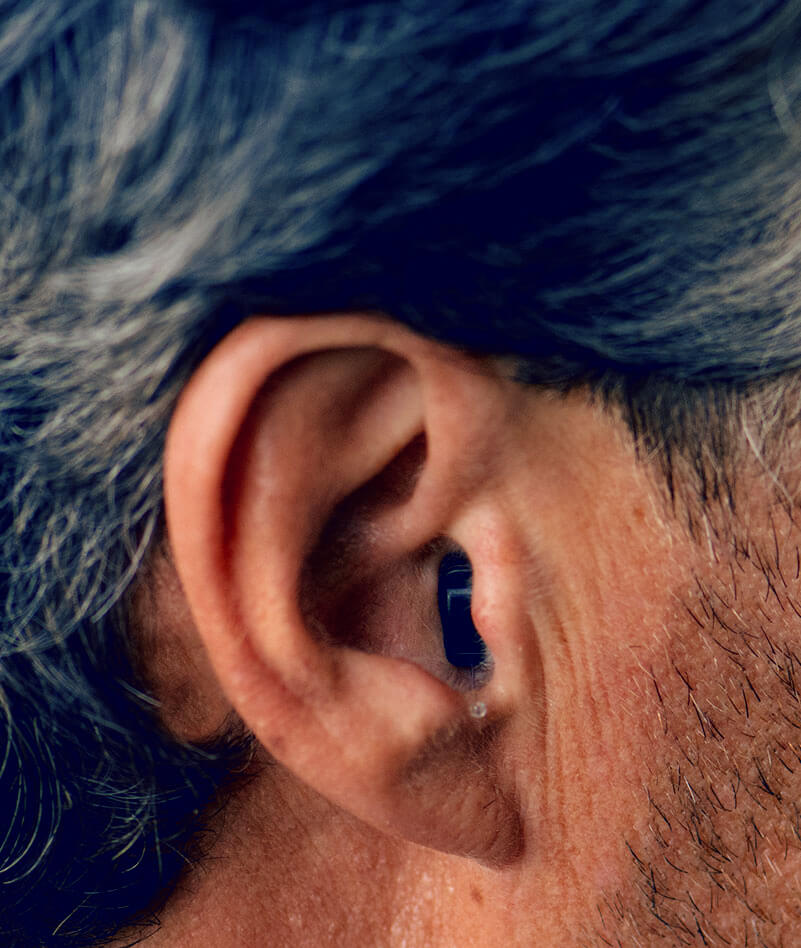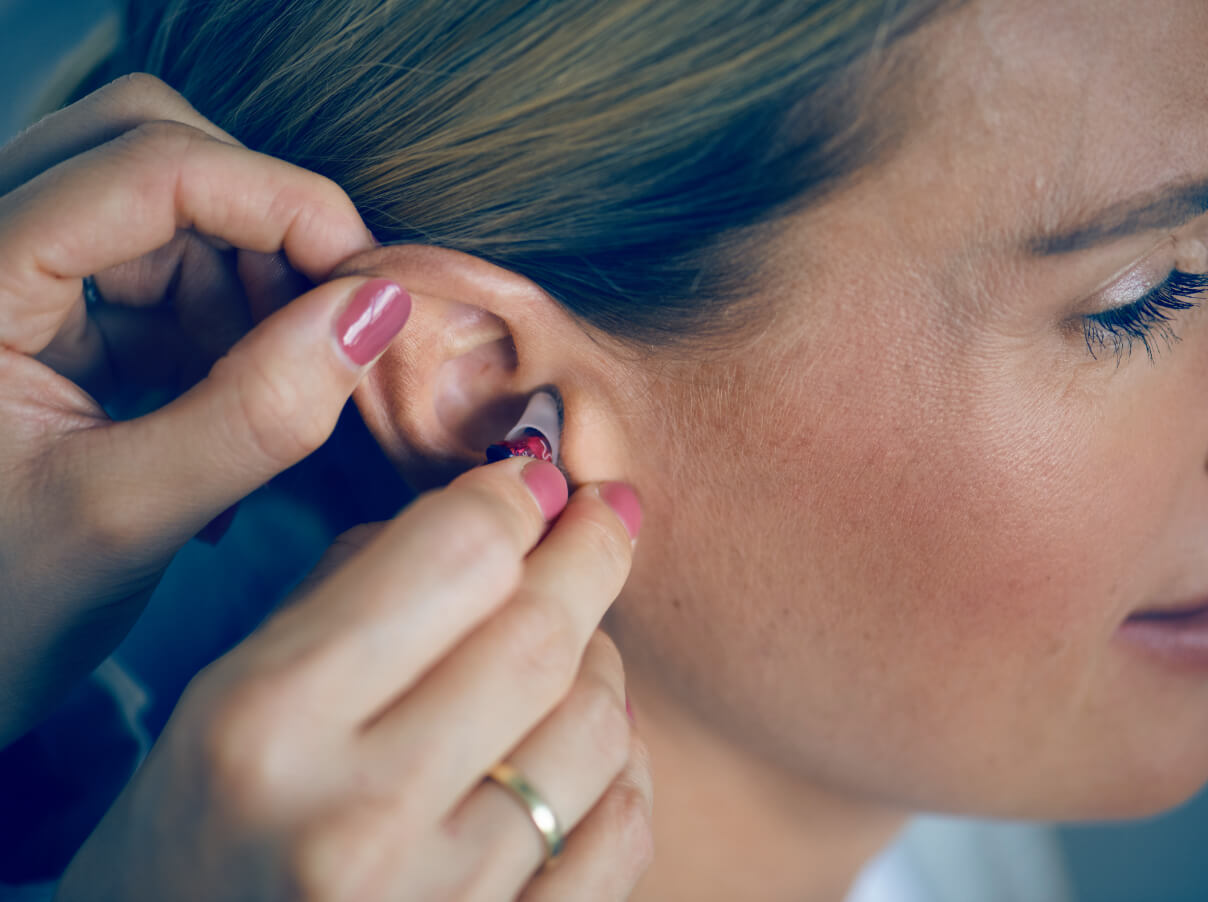
In-the-ear hearing aids
Invisible helpers inside your ear
In the ear hearing aids (ITE) sit directly inside the ear canal. Its components are located inside a shell that is individually adapted to the wearer’s ear canal. ITE hearing aids are typically suitable for mild and moderate hearing loss. ITE hearing aids are usually custom-made, and your acoustician will take an impression of your ear for it.
ITE hearing aids are available in different skin colors, ensuring that they can’t be easily distinguished from the outer ear at first glance. Even within ITE hearing aids, larger devices generally perform better for greater hearing loss.
Table of Contents
- In-the-ear hearing aid types
- Concha hearing aids (Greek shell)
- Ear canal hearing aids
- CIC hearing aids ("completely in the canal")
In-the-ear hearing aid types

These are suitable for mild to moderate hearing loss and are available in three different types:
- Concha hearing aids: These are placed in the auricle, and are the largest form of ITE hearing aids
- Ear canal hearing aids: Barely visible, suitable for mild to moderate hearing loss
- CIC hearing aids: Placed deep in the ear canal, almost invisible and suitable for minor hearing loss
Concha hearing aids (Greek shell)
The ITE hearing aids are placed in the visible part of the ear canal, the auricle. Concha hearing aids are the largest form of ITE hearing aids and therefore offers extended functionality such as directional microphones, volume controls and push buttons for the selection of specific environmental programs. Due to their size, they are typically easier to use and maintain than other ITE hearing aid variants.
Ear Canal Hearing aids (In the canal)
These are slightly smaller than concha hearing aids and are barely visible. Much like Concha hearing aids, they stand out compared to very small CIC hearing aids with a longer battery life and possess extended functionality such as directional microphones, volume controls and several environmental programs. Ear canal hearing aids are suitable for mild to moderate hearing loss.
CIC hearing aids ("completely in the canal")

These in-the-ear hearing aids sit deep in the ear canal and are therefore virtually invisible. CIC hearing aids are the smallest possible hearing aids and use the smallest possible battery size, requiring them to be recharged more frequently. CIC hearing aids are best suited to assist with minor hearing loss.
ITE hearing aids are typically smaller than behind-the-ear hearing aids. CIC hearing aids in particular are barely visible to the naked eye.
To be able to use ITE hearing aids successfully, one needs to meet the following requirements:
- A sufficiently large ear canal to give the hearing aid enough room
- A mild to moderate hearing loss which these small devices are capable of neutralizing
- The acceptance of occluding occlusion effect (dull sound of one’s own voice which is a natural side effect of the placement of the hearing inside the ear canal

